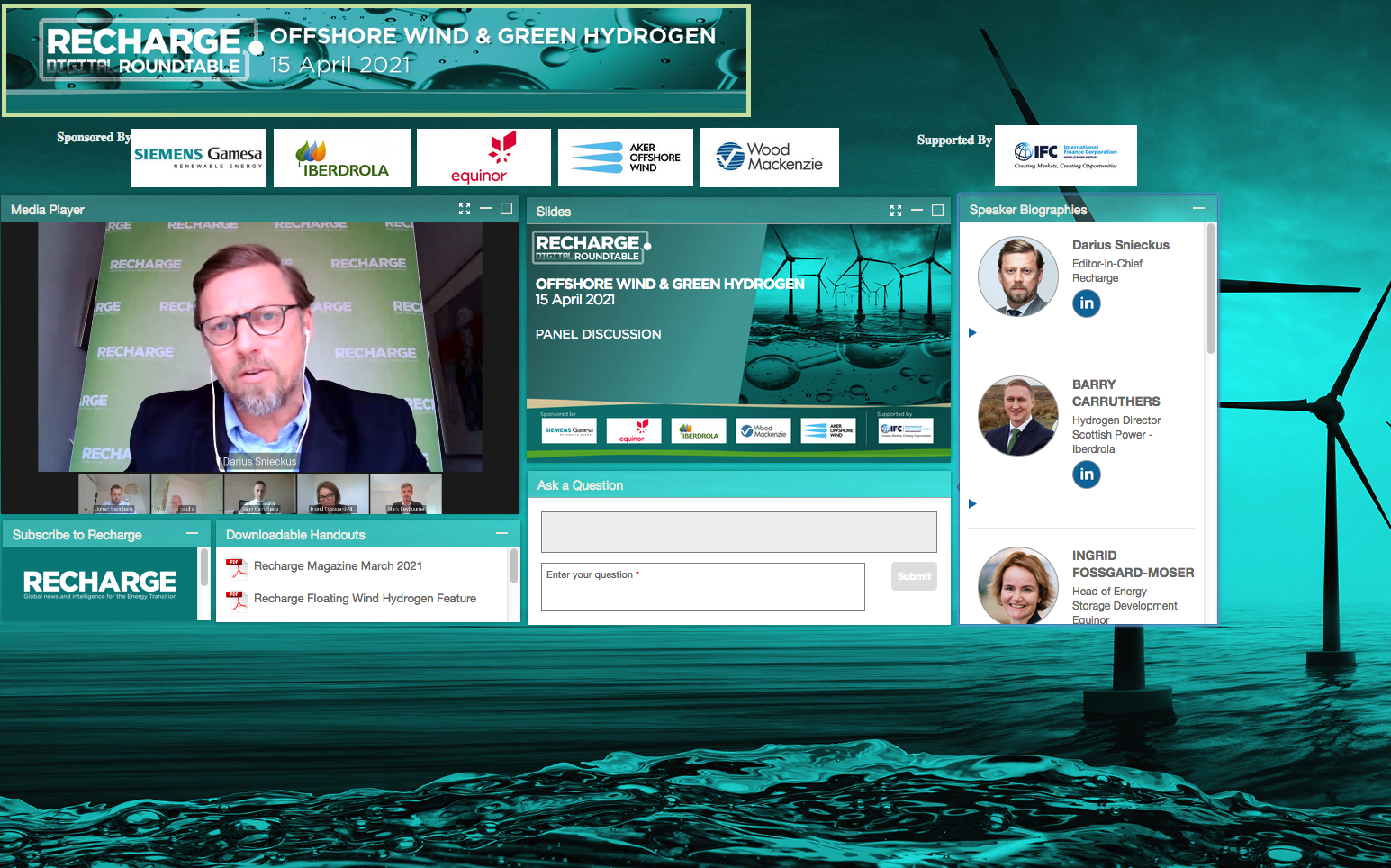A nascent renewable energy market that could help achieve a carbon-free future is being backed by Big Oil, meaning offshore wind to hydrogen production has a better chance of succeeding, long-term.
And because of the Big Oil's involvement, many more jobs should be created in this growing energy market, especially for industry pros with work experience.
Speakers at a recent Recharge roundtable discussion on "Offshore Wind & Green Hydrogen" said that combining the two technologies, and getting government and energy leaders’ help to do so, will help build future offshore wind power plants. Those facilities are much needed, panelists said.
Hydrogen production accomplished through electrolysis is an important part of the energy sector’s future, market insiders say. Gigantic offshore wind farms could produce the fuel, which ships could transport, fuel up on themselves, or both.
This as yet unproven combination of technologies is viewed as a crucial element of a broad-based approach to future energy policy.
Many say the combination is a possible “skeleton key” to unlocking the planet’s carbon-neutral future, said roundtable moderator Darius Snieckus, editor-in-chief of Recharge.
In addition to the help of large energy companies, the effort to develop this new technology will need local and federal governmental assistance. This already is occuring worldwide, as some governments around the world set targets and mandates for reducing harmful greenhouse gas emissions, and announce goals for increasing use of renewable energy sources.
The European Union is planning on using more renewable energy sources in the future. EU officials have declared a goal of achieving 40 GW of offshore wind production by 2030.
Even so, the right combinations of experienced energy sector players, governments, and investors will determine the chance of success of any new ventures in offshore wind.
“This is an extremely competitive sector … Looking at green hydrogen pairing up with offshore wind is an obvious move,” said Tom Heggarty, principal analyst in the energy transition practice for Wood Mackenzie, an energy research and consultancy group. “Big oil companies will be a good fit for this technology. The challenge really is going to be making the economics stack up.”
Big oil companies are obviously beneficial partners to this new market’s development. These companies have longstanding expertise in the storage and transport of gaseous and liquid fuels. Their personnel and contractors know such systems, and also are familiar with offshore energy production facilities through their work. There is crossover in work knowledge that will enable experienced workers to smoothly transition into this new market.
The help of such firms and government assistance are just part of the pie. A market must be created, too, and customers must be found to buy the fuel.
“Securing the customers early on is necessary to lift these [first] projects,” said panelist Ingrid Fossgard-Moser, head of energy storage development for Equinor. Encouraging hydrogen use in heavy industry could provide long-term stability for the energy grid, she added.
In addition to incentivizing use of renewables, governments must do even more, specifically in the regulatory realm, some panelists said. Governments need clarity on long-term carbon pricing, and should ensure that industrial consumers are fully exposed to carbon costs, Heggarty said.
Disconnecting offshore energy from the on-land grid also will be important to the development of this new technology pairing. Otherwise, the cost of connecting to on-shore grids could make development of this new technology too costly to flourish. It needs to be economical, scalable and portable.
Scalability might be the factor that most determines whether such new systems can be economical. Too many infrastructure costs up-front could doom a project. Thus, some are looking to future systems where energy production happens disconnected from the grid, and product is shipped to where it’s needed.
“I think it’s crucial that the majority of green hydrogen be done off grid,” Heggarty said.
Producing green hydrogen from offshore wind power is being considered in spots across the world, even in emerging markets in less developed nations. Part of the interest in going to emerging world markets with this new technology is based upon the need. The majority of greenhouse gas emissions are from countries with emerging economies, said Mark Leybourne, senior energy specialist and co-lead for the World Bank Group’s Offshore Wind Development Program.
Replacing outdated energy production facilities in such places makes sense for a variety of reasons. Infrastructure development, project development, new technology development and implementation worldwide means jobs, now and in the future. It also means lower greenhouse gases now, and the refinement of a much needed technology pairing sooner.
“We can’t wait for a few decades before we start rolling this out in developing countries,” Leybourne said.
Watch the full roundtable discussion here




